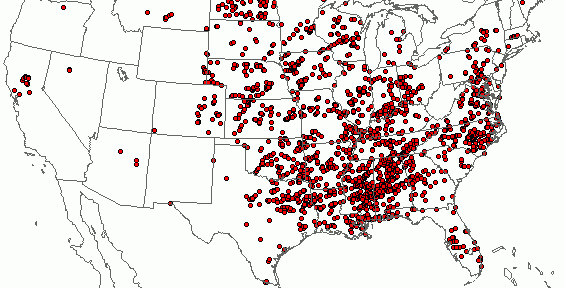When properly enforced, building codes are very effective for ensuring that buildings meet certain minimal requirements for strength and safety. Recent studies by the National Institute of Building Sciences (NIBS) have shown, however, that additional risk-mitigation measures can be beneficial even in proportion to the added costs. In the following post, Randy Shackelford, P.E., of Simpson Strong-Tie, shares some of the NIBS 2017 study benefit-cost results for two mitigation types — building beyond minimum code requirements, and federal mitigation grants.
Continue Reading
Tag: tornadoes
Storm Shelters in the Wake of the Oklahoma Tornado
As we continue to learn more about the devastation in Oklahoma from the EF-5 tornado that struck the city of Moore and surrounding areas on Monday, many building professionals and homeowners are questioning the safety of their homes and other structures in tornado-prone areas. Winds of the recent storm reached speeds up to 210 miles per hour and destroyed hundreds of homes, businesses, schools and hospitals. Many structures were leveled to their foundations. The question that is posed after an event like this is – can you build a tornado-resistant home or structure?
A recent article in the Huffington Post asked that question to several design professionals, including our own resident code expert, Randy Shackelford, P.E., a Simpson Strong-Tie engineer based in McKinney, Texas. While designing a tornado-proof home is not practical or economical, properly designed storm shelters can save lives. Take a look at the Huffington Post article here.
Last year, I wrote a post about Building a Storm Shelter to ICC-500 Design Requirements, which presents the most economical solution to resisting the strongest of tornadoes. We’ve also covered this topic from various angles in the blog, from design – a post about Code-Plus Programs that provides some guidelines for building structures that are more resistant to hazards than what the code requires, Designing Light-Frame Wood Structures for Resisting Tornadoes and checking for Building Drift – to addressing specific parts of a structure, such as Preventing Roof Tiles from Becoming Wind-Borne Debris and Roof Deck Design Considerations for High Wind Events. Our Technical Bulletin about how to strengthen dwellings in tornado-prone areas provides further information.
Our thoughts and prayers continue to be with everyone affected by the Oklahoma tornado. We are thankful to report that our local sales reps and families in that area are safe. If you have additional thoughts about the tornado and storm protection, please leave me a comment.
– Paul
What are your thoughts? Visit the blog and leave a comment!
Designing Light-Frame Wood Structures for Tornadoes. It Can Be Done!
Being from California, I had always bought into the common misperception that wood light-frame construction can’t be designed to resist tornadoes. While it is true that debris impact can’t be cost-effectively designed into residential structures, there is a lot that can be done to strengthen the structure and protect the occupants inside. Using the same technology common in hurricane-prone regions, these buildings can protect people for more than 95% of reported tornadoes.
The effect of tornadoes on wood light-frame structures has been extensively researched over the last few years, and researchers agree: A strong, continuous load path is essential to minimize destruction.


